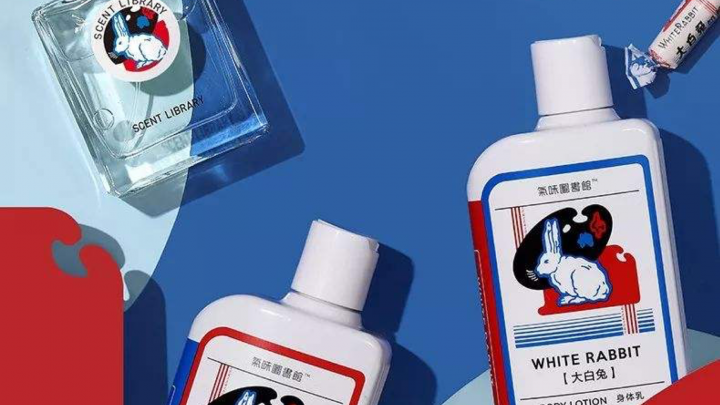

White Rabbit creamy candy has become a hot spot on social media this year. From this brand’s lipsticks that were sold out within seconds, to clothes, perfume, skincare, milk tea and ice cream—the 60-year-old branding has taken on a new look, turning into an internet sensation.
In fact, it is not the first time that White Rabbit has become a sensation. Early in the 1940s when it was called “ABC Mickey Sugar”, it was already what every kid dreamt about. In the 70s, it even became a national gift—Former premier Zhou En lai gave it candies to Richard Nixon during his historical visit to China in 1972. Brezhnev and Khrushchev, leaders of the Soviet Union also once received White Rabbit as a gift.

Package of ABC Mickey Sugar & White Rabbit
However, even used to be the “Apple” of children’s eyes, White Rabbit has been facing a series of challenges. The market competition is fierce, with so many sweets options, people’s love for White Rabbit starts vanishing.
The iconic brand takes the challenges so seriously that they start a series of transformations. In this article, we will use the 4 Facets of Brand Positioning to examine how White Rabbit breaks the deadlock and rebuilds its image to the public.
To its founder, White Rabbit was not just creamy candy—the product carried his love for the whole generation. “Seven White Rabbit candies equal a cup of milk” is not just a slogan, but also a health-conscious promise to the consumers. On its official website, it says “White Rabbit selected the best raw material. Each pot of syrup is hand-made for 40 minutes by the workers. The candy is chewy, rich in flavor and full of nutrition.” In the age when supplies were deficient, White Rabbit creamy candies seemed particularly precious.
Both the slogan and the craftsmanship behind the product resonate with the original aspiration of Liu Boyong, founder of White Rabbit. In 1943, Liu was inspired by British creamy candy, and decided to make his own creamy candy so that Chinese people can also taste the milky chewy goodness. This candy, with affordable price and stylish packaging, successfully replaced foreign sweets in one fell swoop, becoming one of the most popular products in China.
Nowadays, White Rabbit is no longer a rare thing for us, If the creamy candy used to be the source of happiness for everyone, the current White Rabbit hopes to bring back pure happiness of our childhood through its symbolic taste and a touch of nostalgia. White Rabbit has been made into ice cream, sweetened milk, and even emojis, you name it. With White Rabbit, people can let go of pressure and find a moment just for themselves, have a good time and enjoy the happiness, no matter how busy things get.
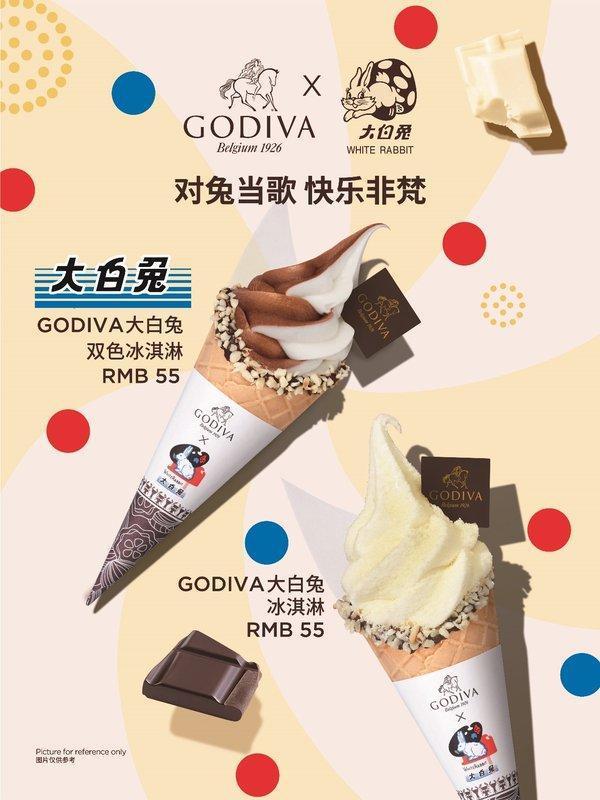
White Rabbit × Godiva ice cream
Looking back to the initiatives White Rabbit took to promote its co-branding campaigns, we can see its whole idea behind its universe. The brand is not just about the symbolic flavor, but also about its influence through a variety of sensory marketing activities.
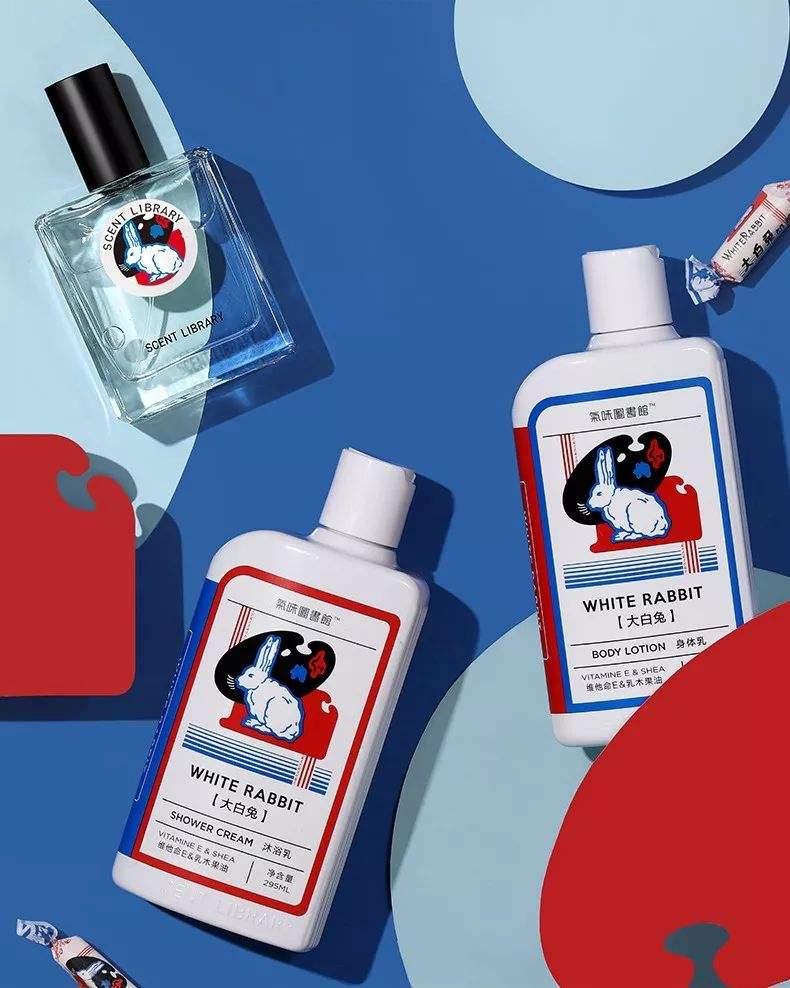
White Rabbit × Scent Library perfume and body lotion
For instance, White Rabbit together with the Scent Library, brought consumers a Brand world of ‘A Bite of Creamy Candy’ and ‘The Scent of Creamy Candy’. Some netizens joked that they smell like a “A Walking White Rabbit” after applying the perfume and lotion. The milk tea created by White Rabbit and Happy Lemon has become a huge hit in China, so as the other products like ice cream and sweetened milk, which rose great awareness among customers.
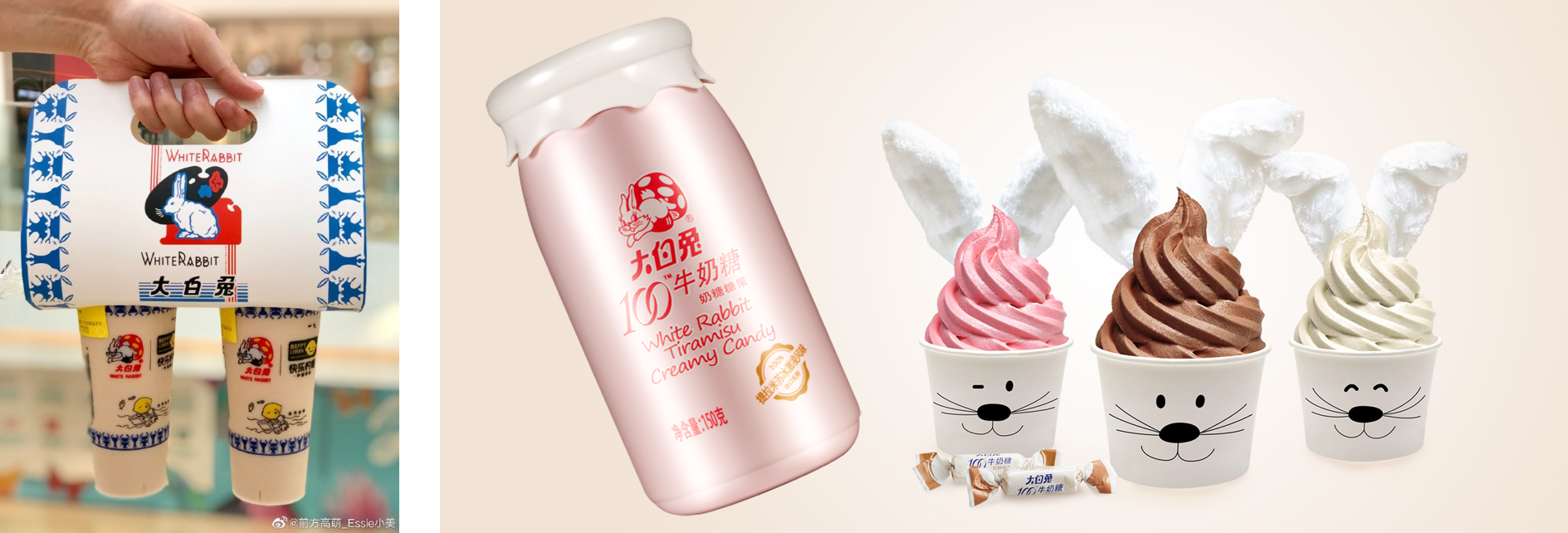
White Rabbit milk tea, sweetened milk and ice cream
Bringing a candy world with no limits, White Rabbit has a clear notion about how to better connect with young generations—pushing itself even outside the food and beverage industry and entering into fashion. It collaborated with the brand, LEDIN*, to design clothes that represents the culture of “National Streetwear”. They even picked the trendy spot—the fashion shopping centers, as the venue for its offline exhibition tour. It is more than just a candy brand, it leads a trend.
(*LEDIN: A Chinese fashion clothing brand for young customers)
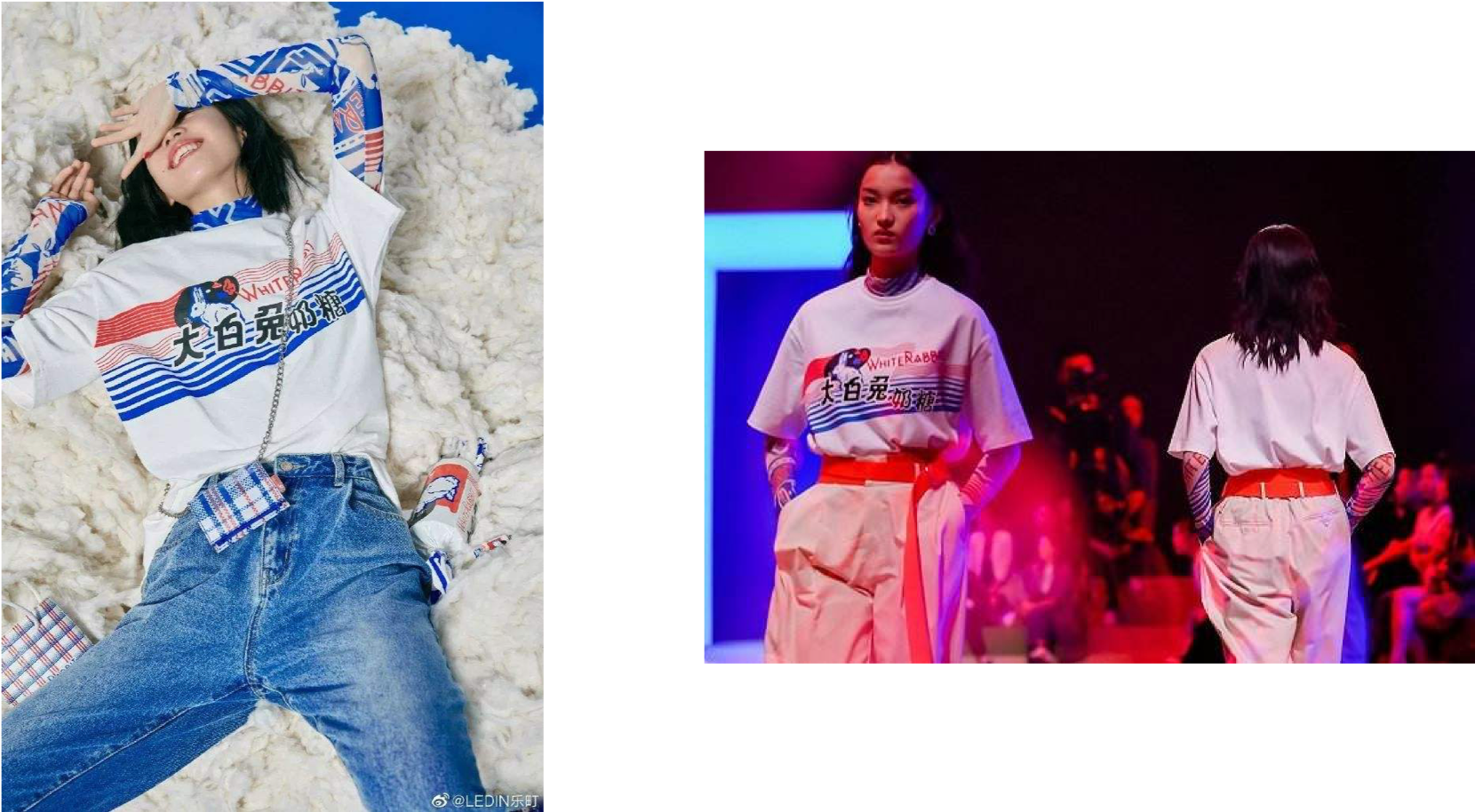
White Rabbit × LEDIN
Through its unique characteristics and creative collaborations, it successfully penetrates into many aspects of people’s lives, bringing its own “happiness” and “purity” to everyone.
“Trick or Treat”, “No Candy, No Joy”, “Have a Good Cry”, “Creamy Candy is the Essence of Milk”, these interesting taglines shown on the official website totally reflect brand’s casual, joyful, and pure personality. This is what it stands for—embrace pure happiness and be true to yourself, which also perfectly resonates with the young generation.
This brand is not the first traditional brand to launch innovative brand campaigns—Want Want (旺旺[wàng wàng]) is another example of brand transformation. But apparently, it did a better job. Thanks to its unique positioning and effective communication to its target audience, the brand expands its product line while still keeping a consistent brand image, which continuously reminds customers of the best memories of childhood – the resonation is so strong that it successfully leads to purchase decision.
This brand has got a long way to go. Being a big hit also put it in the danger of becoming just a fad. Once time passes, customers’ passion will fade away. With all these successful branding efforts, It has won back people’s heart for the moment, but for the long term, product innovation and development are the key. The product itself is the best brand advertisement, and those keep up with the pace of change can stand the test of time.
A Labbrand Group Company © 2005-2025 Labbrand All rights reserved
沪ICP备17001253号-3To improve your experience, we use cookies to provide social media features, offer you content that targets your particular interests, and analyse the performance of our advertising campaigns. By clicking on “Accept” you consent to all cookies. You also have the option to click “Reject” to limit the use of certain types of cookies. Please be aware that rejecting cookies may affect your website browsing experience and limit the use of some personalised features.